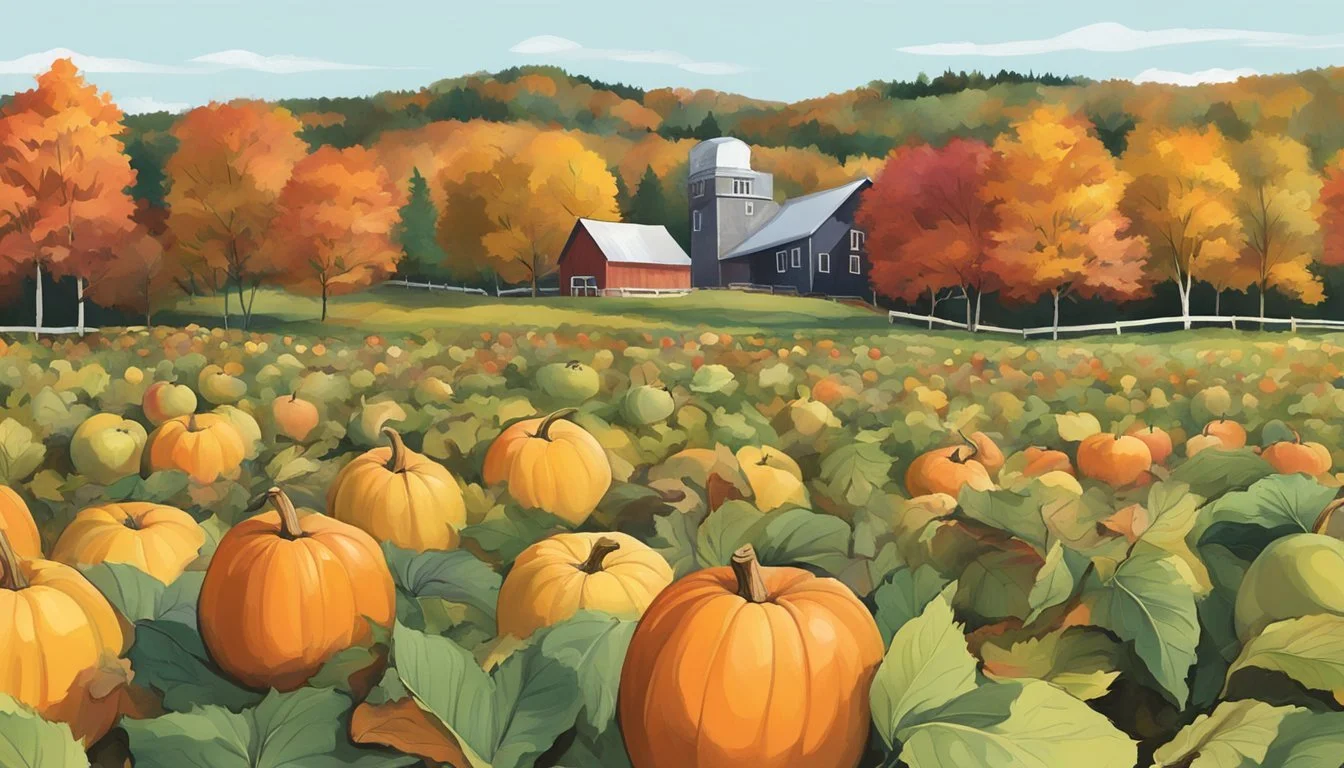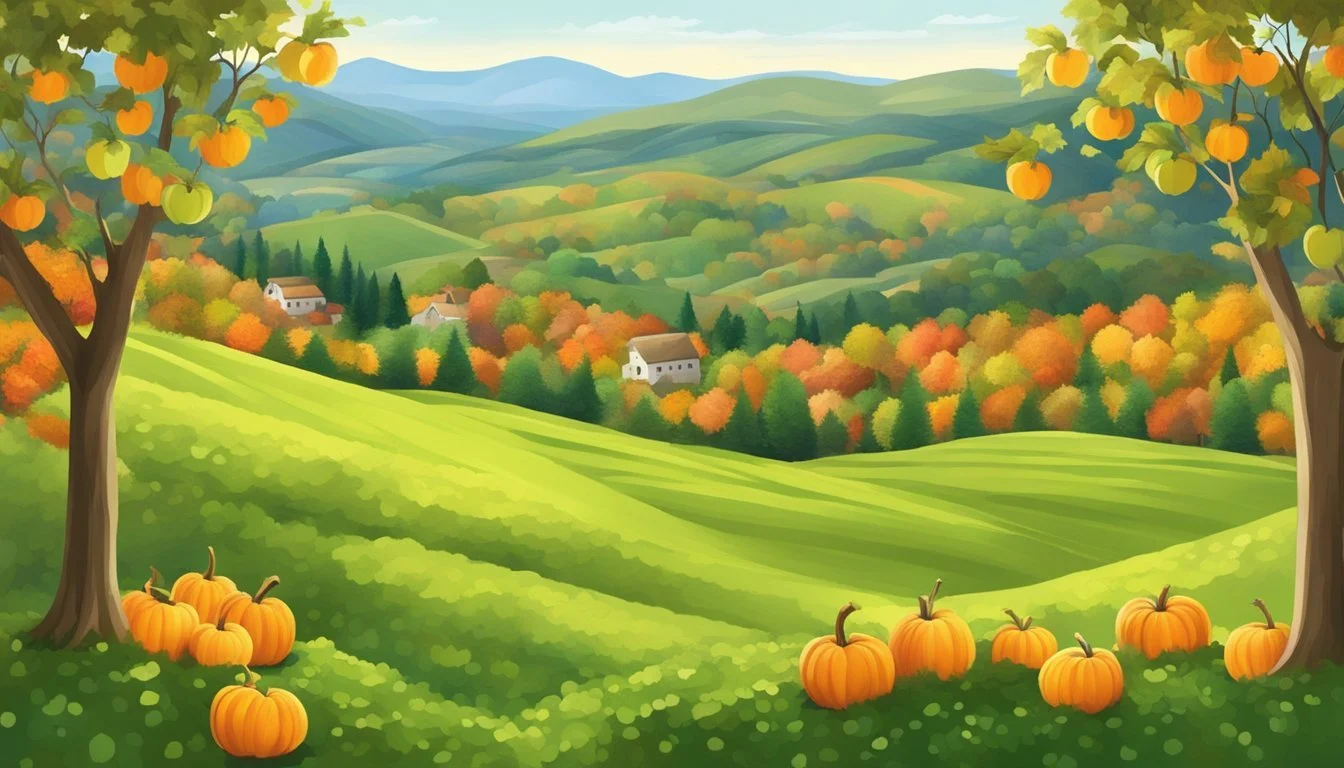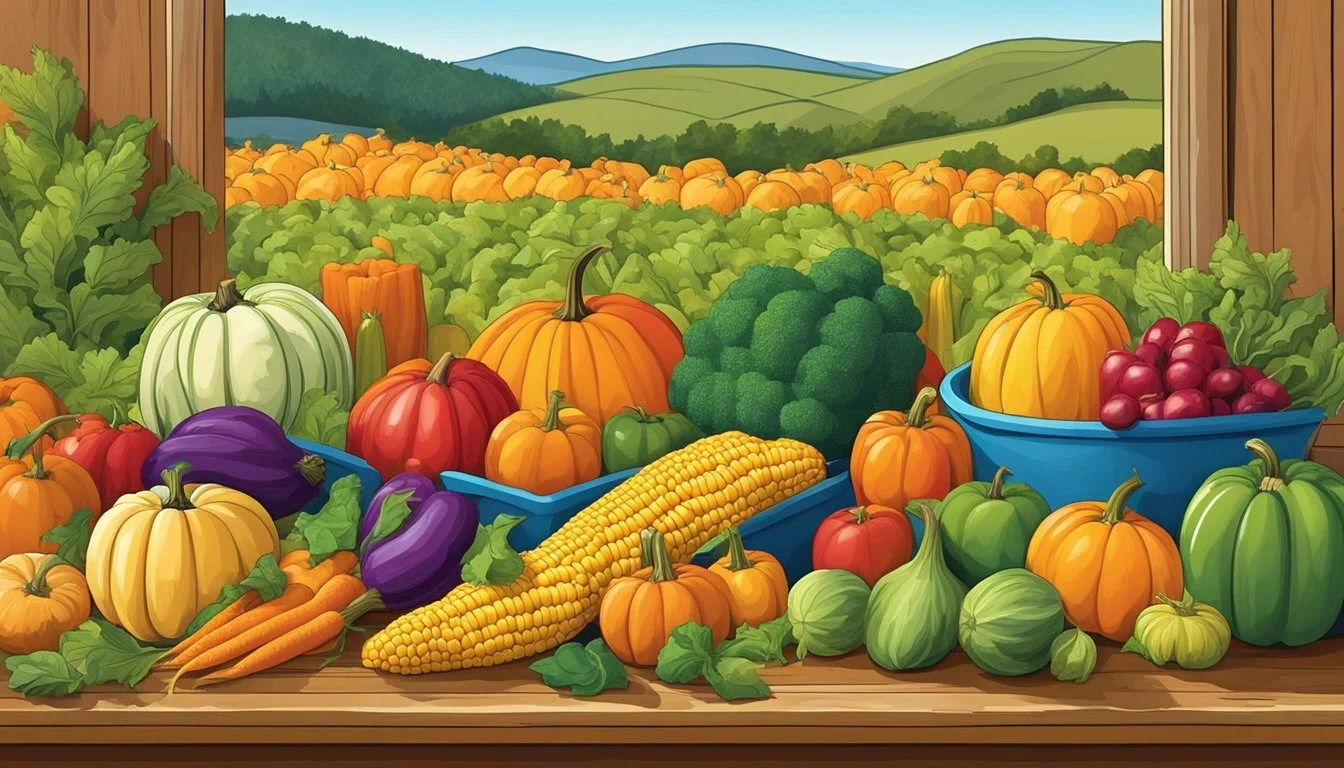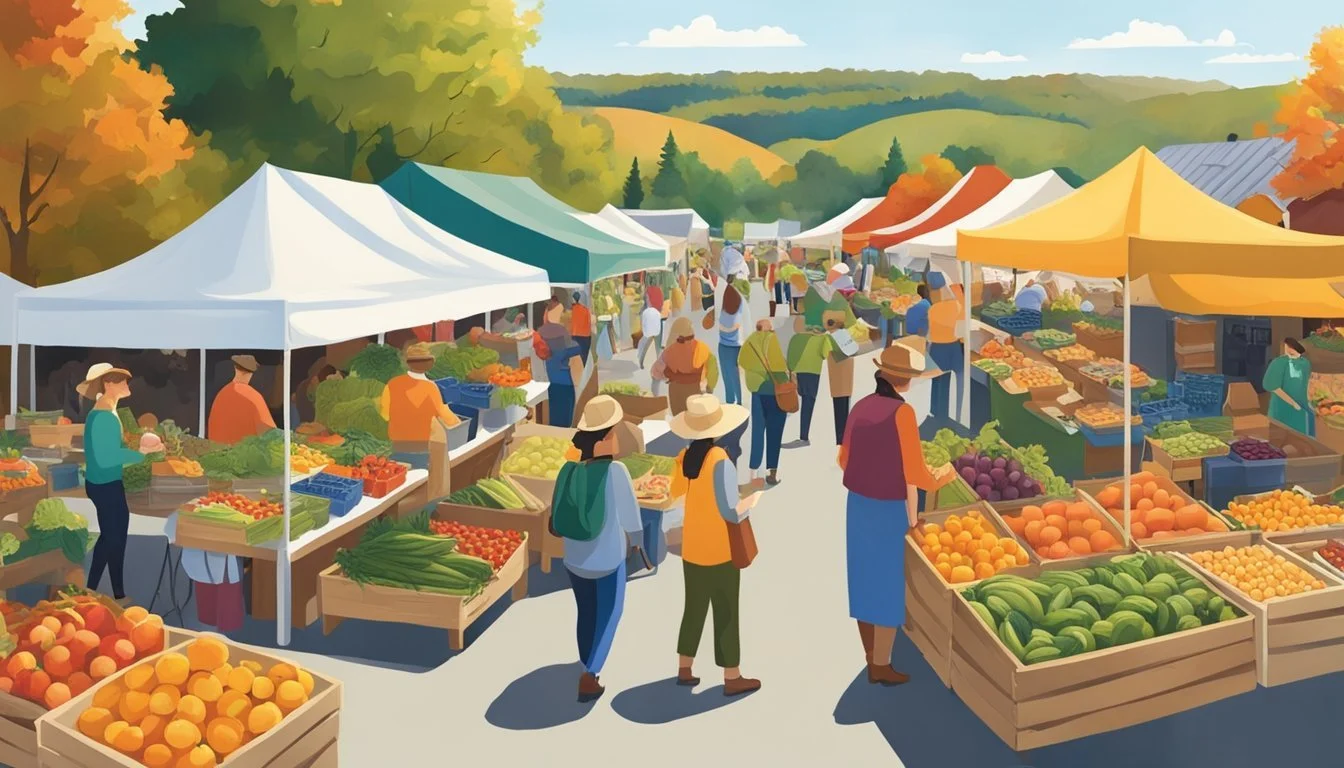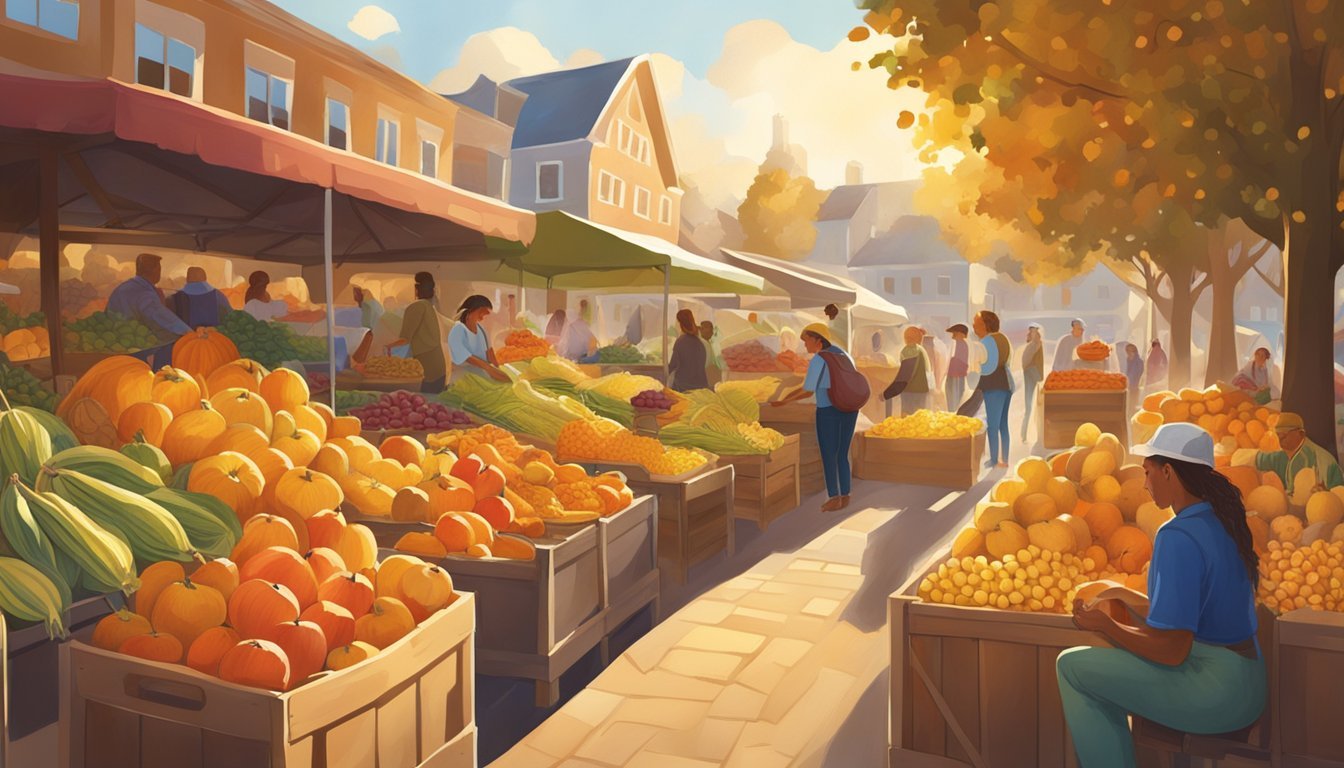Vermont Seasonal Fruit & Vegetables in September
A Guide to Fresh Produce
This Article is Part of our Vermont Seasonal Fruit & Veg Calendar
September in Vermont is a transformative time when the lush greenery of summer begins to transition into the dramatic colors of fall. This month brings a delightful variety of produce to tables across the state, showcasing the rich bounty of Vermont's farms. With the changing leaves as a backdrop, local farmers' markets and grocery stores are brimming with a range of fresh fruits and vegetables that are reaching their peak in flavor and nutritional value.
Fruits like apples (how long do apples last?) begin to take center stage, ripening to perfection and signaling the start of the much-anticipated apple picking season. Other fruits, such as blueberries and the last of the summer's raspberries, make their final appearance, offering a last taste of summer sweetness. Meanwhile, vegetables like kale, (What wine goes well with kale?) beets (how long do beets last?), and carrots (how long do carrots last?) provide nutritious options, while pumpkins and winter squash hint at the hearty meals synonymous with the approaching colder months.
Vermont's climate and soil contribute to the high quality of its produce, particularly in September, when the weather is typically favorable for an abundant harvest. The diversity of crops available allows for a multitude of culinary explorations, from apple-based desserts to savory dishes featuring root vegetables and leafy greens. This season's harvest not only supports the local economy but also encourages a connection between consumers and the land that sustains them.
Overview of Vermont Seasonality
In Vermont, September marks a transitional time where the tail end of summer's bounty intersects with the early yields of fall. Consumers can access a wide variety of produce that is in season, maximizing freshness and nutritional value.
Understanding Seasonal Eating
Seasonal eating in Vermont means adjusting one's diet to the rhythms of local harvests. In September, a consumer can indulge in the last summer harvests such as corn, while beginning to enjoy fall crops like apples. The overarching pattern reflects a shift from the lighter, often raw items of summer to the hardier, versatile selections typical of fall.
Benefits of Seasonal Produce
The benefits of consuming seasonal produce in Vermont are multifaceted. Nutritional value: Seasonal fruits and vegetables are often at their peak in flavor and nutrients. Economic benefits: They are usually more affordable when purchased in season. Environmental impact: Seasonal eating can reduce the carbon footprint since less transportation is usually required for locally grown goods. Community support: It promotes a stronger local economy by supporting Vermont farmers and producers.
Here's a quick look at the seasonal transition:
Late Summer (July - September): Corn, cucumber, tomatoes
Early Fall (September - October): Apples, pears, squash
One can enjoy the full breadth of what these seasons have to offer through the diverse, in-season produce available in Vermont.
September's Harvest
In Vermont, September marks a bountiful period for harvesting a wide range of fresh produce. The cooler climate is conducive to the ripening of both late-summer fruits and a variety of hardy vegetables.
Fruits in Season
Apples: A hallmark of Vermont's September, apples are at their peak, with varieties ranging from sweet to tart.
Pears: They are harvested late in the month, offering a soft and buttery alternative to crisp apples.
Vegetables in Season
Peppers: September sees a variety of peppers, from bell to spicy, adding color and flavor to dishes.
Tomatoes: They continue to ripen early in the month, perfect for sauces and salads.
Kale: This hearty green thrives in the cooler temperatures, gaining sweetness after a light frost.
Greens: A broad category including spinach and lettuce, these staples maintain their freshness in the cool of September.
Potatoes: Root vegetables like potatoes are dug up this month, versatile for a vast array of culinary uses.
Fruit Highlights
September in Vermont presents a cornucopia of fresh fruit ripe for the picking. The orchards and fields offer a delightful selection of apples, berries, and stone fruits, each with distinct flavors and varieties to please any palate.
Apple Varieties
Vermont's apple orchards come to life in September, delivering an abundance of choices. Honeycrisp apples are sought after for their crisp texture and a balance of sweet and tart flavors. For those preferring a tangier apple, McIntosh provides a juicy bite, perfect for both eating fresh and baking. Gala apples, with their mild and sweet flavor, make for a great snacking apple.
Honeycrisp: Crisp, sweet-tart balance
McIntosh: Juicy, tangy, ideal for baking
Gala: Mild, sweet, excellent for snacking
Berry Selection
The tail end of summer blesses Vermont with a variety of ripe berries. Raspberries remain a popular choice, with their bold, sweet flavor and a hint of tartness. They are typically available through the first frost, making them a staple in early fall.
Raspberries: Bold, sweet, with a tart undertone
Stone Fruits and Others
While the stone fruit season is winding down, you can still find some late-season plums that offer a succulent, juicy experience. They come in an array of colors and flavors, ranging from deep purple to vibrant red, with a sweet to tart taste depending on the variety. September also signifies the arrival of ripe pears, which, like apples, come in various types. The most common in Vermont are Bartlett pears, known for their juicy, sweet flavor.
Plums: Succulent, sweet to tart, varies by variety
Bartlett Pears: Juicy, sweet, commonly found
Vegetable Highlights
In September, Vermont's harvest brings to the market a robust variety of vegetables that are at their peak. Gardens and farms are full of both vibrant root vegetables and lush greens, alongside ripe nightshade varieties and crunchy cucurbits.
Root Vegetables
Potatoes come into their prime in September, offering a range of varieties from starchy Russets to waxy fingerlings. Carrots, with their sweet crunch, are perfect this time of year, ideal for fresh salads or hearty stews. Beets and radishes also make a colorful appearance, providing earthy flavors perfect for roasting or adding a fresh bite to dishes.
Potatoes: Ideal for baking, mashing, or roasting
Carrots: Fresh or cooked, add sweetness to any meal
Beets: Roast or pickle them for distinct flavor
Radishes: Best served fresh for a peppery crunch
Leafy Greens and Brassicas
Kale, a superfood, is especially tender in the cooler September weather, while lettuce varieties are crisp and abundant for salads. Cabbage is also in season, offering a versatile base for both raw slaws and cooked dishes.
Kale: Excellent for salads or as cooked greens
Lettuce: Varied types are ready for harvest
Cabbage: For slaw, soups, or fermenting into sauerkraut (how long does sauerkraut last?)
Nightshades and Cucurbits
The warm days and cool nights help nightshades like tomatoes, eggplant (What wine goes well with eggplant?), and peppers concentrate their flavors. They are staples in everything from fresh salads to sauces. Cucurbits like cucumbers, zucchini, and other summer squash are still plentiful, great for raw snacks, grilling, or sautéing.
Tomatoes: Juicy and flavorful, great for salads or sauces
Eggplant: Perfect for hearty dishes or grilling
Peppers: From sweet to spicy, add a burst of flavor
Cucumbers: Crisp and refreshing, ideal for salads
Zucchini: Versatile for baking or savory dishes
Storing and Preserving
Once you've selected your fresh produce in Vermont during September, proper storage and preservation are crucial to maintain their flavor and nutrition. These methods will ensure that you can enjoy your seasonal fruits and vegetables for as long as possible.
Short-Term Storage Tips
For short-term storage, refrigeration is key for many vegetables and some fruits. Below is a straightforward guide to help optimize the shelf life of your September produce:
Apples: Keep them in a plastic bag in the crisper drawer of your refrigerator.
Greens (lettuce, kale, chard): Wrap in damp paper towels and store in airtight containers or sealed plastic bags.
Root Vegetables (beets, carrots): Place in plastic bags with holes and store in the crisper drawer.
Tomatoes: Store at room temperature away from direct sunlight until they ripen then move them to the refrigerator.
Corn: Leave unhusked and store in the refrigerator immediately.
Peppers: Store in plastic bags in the crisper drawer of the refrigerator.
By following these tips, individuals can usually enjoy their produce for up to a week, sometimes longer, while preserving taste and nutritional value.
Long-Term Preservation Methods
For those who want to enjoy their produce well beyond the harvest season, long-term preservation methods such as freezing and canning become relevant.
Freezing: Suitable for broccoli (how long does broccoli last?), corn, peppers, and greens. Blanch vegetables first, then place them in freezer-safe bags. Most frozen produce will last for several months.
Produce Blanching Time Broccoli 3 minutes Corn (on cob) 7 minutes Peppers Not required Greens 2 minutes
Canning: Tomatoes can be canned as sauces or whole. Follow specific canning techniques to prevent spoilage.
Tomato Product Processing Time (Pints) Tomato Sauce 35 minutes Whole Tomatoes 40 minutes
Canning and freezing allow the consumer to extend the shelf life of their harvest for months or even up to a year, making it possible to enjoy the flavors of September well into the winter. It's essential to carefully follow established preservation procedures to ensure food safety.
Cooking and Preparation
When it comes to cooking and preparing Vermont's seasonal fruits and vegetables in September, chefs focus on the freshness and robust flavors that define the harvest. They emphasize simple recipes that celebrate the produce's peak quality and consider advanced culinary techniques to elevate the ingredients' natural appeal.
Simple Recipes
Salads are a perfect canvas to showcase the crisp textures and vibrant tastes of September’s bounty. A simple Beet and Carrot Salad can highlight the earthy sweetness of root vegetables, dressed lightly with olive oil and lemon. For fruit, chefs often create rustic Apple Crisps to allow the natural sugar of fresh apples to take center stage.
Roasted Vegetables: Toss a mix of broccoli, cauliflower, and carrots with olive oil, sea salt (how long does sea salt last?), and pepper. Roast at 400°F until tender and caramelized for a straightforward side dish.
Tomato and Basil Soup: Simmer chopped tomatoes and scallions with garlic and vegetable stock, then purée until smooth and garnish with fresh basil for a comforting homemade soup.
Advanced Culinary Uses
For a more complex palate, chefs use Vermont's produce in creative and sophisticated ways. They might craft a Root Vegetable Terrine, layering thinly-sliced beets and carrots, then setting them with a light agar-agar gel for a stunning presentation.
Stuffed Peppers: Bell peppers, available in September, can be filled with a mixture of local ground beef, rice, and diced vegetables, then baked until the peppers are tender.
Raspberry Reduction: Raspberries, at their peak ripeness, can be cooked down with a touch of sugar to create a versatile reduction that complements both sweet and savory dishes, such as cheesecake or grilled pork.
Agricultural Practices in Vermont
In Vermont, agricultural practices are closely tied to climate and sustainability goals. Farmers adhere to standards that support the health of the environment while providing fresh produce.
Organic and Sustainable Farming
Organic farming in Vermont prioritizes the use of natural processes and materials, maintaining soil integrity and ecosystem health. Farmers often employ crop rotations, composting, and biological pest management to uphold organic standards. Sustainable practices such as water conservation, minimal soil disturbance, and responsible livestock husbandry are deeply engrained in Vermont's agricultural community.
Soil Management: Use of organic fertilizers and compost.
Pest Control: Biological pest management over synthetic pesticides.
Impact of Climate on Crops
Vermont's diverse climate can greatly affect crop yields. Temperature fluctuations, particularly unexpected frosts or heatwaves, can impact planting schedules and harvest times. Climate considerations dictate careful planning to maximize crop success throughout the state.
Temperature: Planning around seasonal temperature variations is critical.
Climate Events: Mitigating risks from events like early frosts to protect yields.
Seasonal Events and Farmers' Markets
Vermont celebrates the harvest season with a variety of farmers' markets and agricultural events throughout September. These local gatherings are essential for both residents and visitors looking to experience the state's fresh produce and community spirit.
Local Market Guide
During September, Vermont's farmers' markets are at their peak, offering a bounty of seasonal produce. Visitors can find fresh apples, beans, beets, broccoli, carrots, and more. Some prominent markets include:
Burlington Farmers Market in Burlington: Operates on Saturdays, offering a mix of local fruits, vegetables, and artisanal crafts.
Capital City Farmers Market in Montpelier: Known for a wide selection of organic produce.
Norwich Farmers Market in Norwich and Stowe Farmers Market in Stowe: Both markets feature seasonal crops and local Vermont specialties.
Brattleboro Farmers Market in Brattleboro: A destination for fresh greens, root vegetables, and locally made products.
Grocers across Vermont also stock up on these seasonal items, making local produce accessible beyond the markets.
Agricultural Fairs and Festivities
September in Vermont is not just about fresh produce; it's also a time for agricultural fairs and festivities that showcase the state's agricultural heritage and practices. Key events include:
The Champlain Valley Fair: Offers educational exhibits, livestock competitions, and a taste of Vermont's farming life.
The Tunbridge World's Fair: An event steeped in tradition, featuring agricultural displays, antique machinery, and local food vendors.
These events provide a stage for farmers to connect with the community and celebrate the season's harvest.
Challenges and Considerations
As September arrives, Vermont farmers must navigate a variety of challenges that can heavily impact the availability and quality of fruits and vegetables. These issues range from managing pest control and crop diseases to responding to economic factors that can alter market dynamics.
Pest Control and Crop Diseases
Vermont's growers often face significant issues with pests and diseases, notably in September when conditions are ripe for such outbreaks. In 2023, potatoes were suspected to have late blight, a fungal disease that can devastate crops. This necessitated treatments which may or may not have been successfully in rescuing the affected yield. Wildlife can also cause substantial crop loss, not just in minor damages but in some cases, complete losses of specific crops.
Pests/Diseases: Late blight in potatoes
Wildlife Impact: Substantial, ranging from minor losses to complete crop ruin
Economic Factors Affecting Availability
Economic viability plays a critical role in the month's produce availability. Past records show contrasting economic outcomes within the state – some areas experiencing the worst farming year, while others have adequate yield. For instance, in an area like Guildhall, a mixed outcome was reported: of 52 acres, 12 were lost due to flooding, 20 had below-average yields, and 20 acres produced exceptional results.
Economic Viability: Determinant for farming success and produce availability
Yield Variation: Uneven across different regions within the state
Farmers must consider these challenges when planning crop rotations and their marketing strategies to ensure they can deliver fresh, seasonal produce to consumers despite these hardships.

